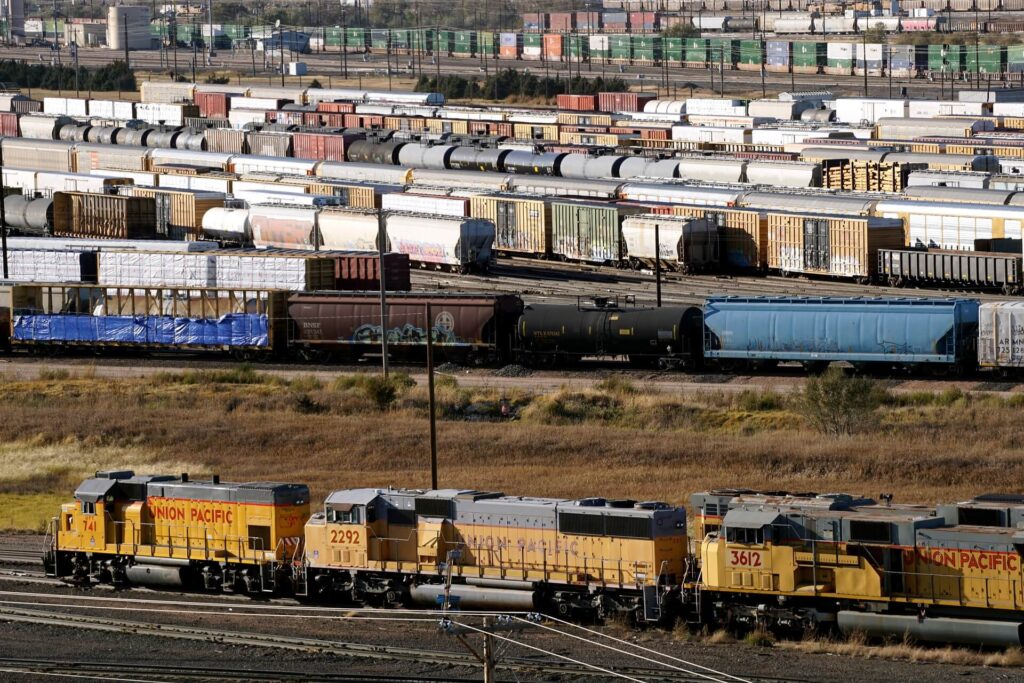We aren’t exactly breaking ground by saying that the modern supply chain is global. But that doesn’t mean it isn’t true.
Goods are manufactured overseas and then shipped to the United States, with millions and millions of items arriving at ports around the country daily. Simply put, if your company is sourcing only from domestic suppliers, you aren’t doing enough to maximize business efficiency.
Mastering the global chain is, however, easier said than done. A key piece to the equation is transloading, or transferring items from one form of transportation, such as a train, onto another, such as a truck.
Let’s go into detail about why it matters for your business.
Planes, Trains, and Automobiles

Pretend, for a second, that you own an e-commerce company that specializes in selling basic kitchen supplies, such as forks, knives, and spoons.
You need a dependable supply of products to keep the efficiency of your business high. Your options are:
- Open a manufacturing facility of your own.
- Partner solely with domestic suppliers that produce the utensils.
- Use a mix of domestic and international suppliers for your products.
Options one and two are cost-prohibitive for many businesses. Option three, however, allows you to choose from thousands of suppliers and increases the chances of finding quality products at a price that ensures your business can profit and operate at peak efficiency. Of course, you still need to find a way to get those products from overseas facilities to your customers. That’s where global transloading comes in.
We’ll take it step-by-step.
1. Products are Loaded Onto Container Ships
When products are ready to be shipped from the production facility, they are loaded into shipping containers and transported by truck to a nearby port. From there, a crew will load the container onto a cargo ship. Businesses can boost efficiency at this step by carefully vetting vendors responsible for transporting goods to the port.
2. A Truck Picks Up the Products From a Port
After the long voyage across the Atlantic or Pacific, the cargo ship arrives at a port. Crews then unload each shipping container from the vessel using a crane and load them onto trucks bound for a transloading facility. To maximize business efficiency at this step, seek out providers with facilities near ports.
3. Products are Delivered to a 3PL Warehouse Facility
Once loaded, the trucks quickly move the products to a warehouse facility near the port. Employees at the warehouse are then responsible for unloading the car, sorting through items, and placing them on shelves.
4. Orders are Placed, and Items are Shipped
The real magic—and business efficiency gains—happen whenever a customer places an order. Teams at the warehouse work to fulfill the order by picking items from shelves, packing them into boxes that are just big enough to hold all of the items snugly, and then placing them in trucks.
From there, anything can happen. The items can be shipped directly to customers. Or, they can get taken to the nearest train depot and placed on a freight train a bit further away from their destinations.
It sounds simple when global transloading is broken down like we did above. But you’d be surprised. It takes careful coordination and communication between many different parties. All of the moving parts involved in transloading are why companies outsource it and choose business efficiency over having total control.
When push comes to shove, though, it pays off. Here are a few ways handing off transloading to the experts can be a boon for your business.
Business is Booming
Still trying to decide if partnering with a 3PL vendor to handle transloading is the right move for your company? Keep reading to learn about some benefits that companies can take into account.
It Lets Your Supply Chain Grow Alongside Your Business
Take a second to think about where your company was last year and where it is now. Your growth is like night and day, right?
Achieving business efficiency takes a second sense. You need to feel that something within your business is changing and respond. Fast. Re-orienting your supply chain is a massive undertaking that can take years if you aren’t experienced in scaling business operations.
However, when you partner with a 3PL provider, you can always feel like you’re in good hands. They are used to working with businesses big and small and adjusting as customer demand picks up to maximize business efficiency. Your customers will feel happy, whether buying an item from you on day one or day 1,000.
It Gives Your Business Flexibility
There’s no one-size-fits-all approach to shipping. If, for example, your company is in California and you’re shipping to Pennsylvania, you wouldn’t use the same shipping method as you would for an in-state customer.
Global transloading gives you control over myriad factors related to the shipping of your products, including:
- Cost: Since you have a range of shipping options, you can promote business efficiency by choosing the most cost-effective method. For instance, while shipping items by truck is an excellent idea for short-distance deliveries, trains are usually the most cost-effective way of transporting items over long distances.
- Delivery Times: Transloading gives 3PL vendors the ability to optimize routes to reduce delays. This could include shipping products by train to a specified destination, unloading, and then completing the final leg of the journey by truck.
- Avoiding Supply Chain Disruptions: Bad weather, traffic, and many other factors can delay deliveries. 3PL providers can mix and match transportation methods to prevent these slowdowns.
Trust CONRI With Your Company’s Transloading
CONRI is one of the nation’s leading transloading solutions providers. We have strategically located our facilities near several of the country’s busiest ports and major highways to ensure items can quickly get from the ports to your customers in no time. Get started by submitting a contact form today!

